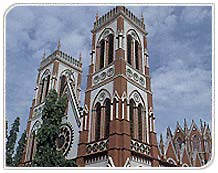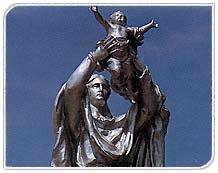Pondicherry Travel Guide
---------------------------------------------------------------------------------------------------------------------------------------------------------------------------------------------------------------------------------
Pondicherry Home » About Pondicherry Travel Guide » Places to See » Beaches » Churches » Fairs & Festivals
Monuments » Temples & Mosques » Yoga & Spirituality
---------------------------------------------------------------------------------------------------------------------------------------------------------------------------------------------------------------------------------
Pondicherry Home » About Pondicherry Travel Guide » Places to See » Beaches » Churches » Fairs & Festivals
Monuments » Temples & Mosques » Yoga & Spirituality
---------------------------------------------------------------------------------------------------------------------------------------------------------------------------------------------------------------------------------
Monuments
 A
wondrous history of this place is told by obliging Pondicherrians. As well
as the striking grid-like street planning, buildings and monuments. About
the arrival of the European maritime powers of the 16th century - the Portuguese,
the Dutch, the Danes, the English and importantly, the French, setting foot
first in 1670. About the transformation of a tiny fishing village into a grand
port city by the 18th century. About fierce Anglo-French battles. Ravages.
And sieges. About brave generals. Friendly maharajas. And even, philanthropic
courtesans. And about an undisturbed French rule for 138 years till 1954.
A
wondrous history of this place is told by obliging Pondicherrians. As well
as the striking grid-like street planning, buildings and monuments. About
the arrival of the European maritime powers of the 16th century - the Portuguese,
the Dutch, the Danes, the English and importantly, the French, setting foot
first in 1670. About the transformation of a tiny fishing village into a grand
port city by the 18th century. About fierce Anglo-French battles. Ravages.
And sieges. About brave generals. Friendly maharajas. And even, philanthropic
courtesans. And about an undisturbed French rule for 138 years till 1954.
Park Monument (Aayi Mandapam)
The most beautiful public space in town is the green and shaded Government Park, in the heart of Pondicherry. Standing smack in its centre is Aayi Mandapam. Built in Greco-Roman architecture, unsinfully white, during the reign of Napoleon III - Emperor of France.
It bears the name of Aayi - a 16th century courtesan. Who razed down her home and replaced it with a reservoir. To appease a passing king, angry at having mistaken her candle-lit residence for a holy place. It was from this lake that Napoleon's men quenched their thirst, some 300 years later. Napoleon, charmed by the story, ordered a monument to Aayi.
Arikamedu
A historical site, 4 kms south of Pondicherry, which revealed local trade with Romans as early as 2nd century B.C. Some even believe Roman settlements existed. Wine seems to have been a major import as excavated amphora jars suggest. In return, textiles, precious stones and shell-jewellery left these shores. Moreover, you'll still find the amazing ruins of an 18th century French Jesuit Mission House here. It was abandoned in 1783.
Ananda Ranga Pillai Mansion
Ananda Ranga Pillai was the celebrated dubash of Dupleix, the governor of Pondicherry while it flourished under French glory. Pillai's compilation of diaries serve as a storehouse of information on 18th century French India. His mansion, completed sometime in 1738, is one of the oldest surviving buildings on the west side - then known as "natives' quarters." Its architecture represents a curious mix of French and Indian styles.
The Statue of Dupleix
This is Pondicherry's tribute to Francois Dupeix whose able governorship came to an end in 1754. However, French recognition came about a century later, when, in 1870, they paid homage by commissioning two statues - one in France and the other in Pondicherry.

The 2.88 m tall structure was erected over six carved ornamental granite pillars at the Place du Republique. It now stands restationed overlooking a children's park at the southern end of the promenade, now named Goubert Avenue.
Place Du Gouvernment
The Place Du Gouvernement is a brilliant example of town planning in Pondicherry. Comprising the 18th century Palais Du Gouvernemei/t - now the Raj Nivas (not open to the public) - and the old tribunals - now housing the Legislative Assembly - alongwith a neat three-sided line-up of other handsome buildings.
At the centre, surrounded by a well-tended garden, stands the Water Monument, sculpted to commemorate the introduction of good drinking water for the population. Latin and Tamil inscriptions bear out the story. Some exquisitely carved monolithic pillars, brought to Pondicherry from the Gingee Fort after its capture in 1751, adorn the place.
19th Century Light House
The early sea-farers to Pondicherry were guided by a beacon kept burning on the Red Hills (Gorimedu), about 5 kms west of the town. The now-abandoned light house standing on the edge of the sea near the Place Du Gouvernement was lighted for the first time on 1 July, 1836. The light was placed upon a masonry tower, 29 m above sea level and was visible upto a distance of 29 kms into the sea. In 1931, the fixed light was replaced by a revolving lantern. It fell into disuse with the commissioning of the new light house in 1979.
French War Memorial
No visit to Pondicherry is complete without a free-wheeling stroll down the peaceful promenade - Goubert Avenue ('Beach Road', locally speaking). Where you'll find this elegant tribute to the uniform. It gets prettily illuminated during a solemn ceremony every 14 July, Bastille Day.
The Statue of Joan of Arc
A lasting, triumphant image of the heroic French damsel Jeanne d' Arc, is frozen in marble, within the garden laid out in front of L' Eglise de Notre Dame des Anges.
-------------------------------------------------------------------------------------------------------------------------------------------------------------------------------------------------------------------------------